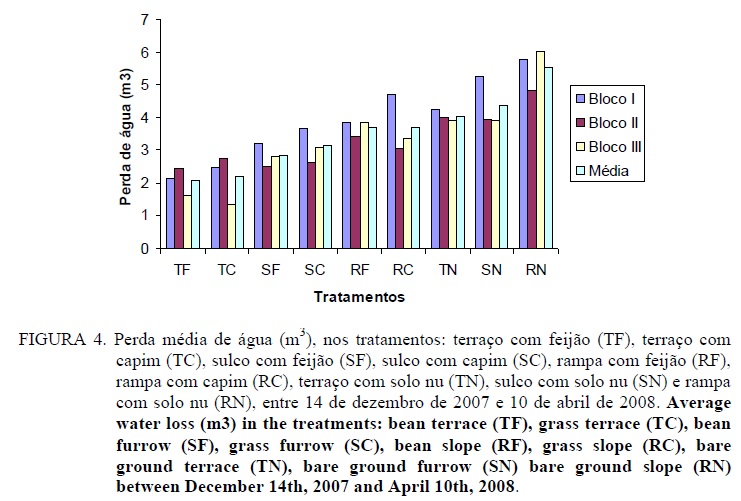The flow of sediment from cropped land is the main pollutant of water sources in rural areas. Due to this fact, it is necessary to develop and implement technologies that will reduce water and sediment discharges. Accordingly, an experiment was conducted in the Department of Biosystems Engineering - ESALQ / USP, Piracicaba - SP with the objective to evaluate the effect of different soil cover (bean, grass and bare ground) and erosion control practices (wide base terraces and infiltration furrows in slopes (no practices to control erosion)) while measuring water losses in runoff. The statistical design adopted was randomized blocks in a 3x3 factorial scheme resulting in 9 treatments with 3 replicates (blocks). The period of rainfall data collection was December 6, 2007 to April 11, 2008. A 21.1 cm diameter rain gauge was installed in the experimental area. Terraces were the most efficient practices for reducing erosion losses in the treatments with infiltration furrows being better than the control treatment. Bean was more effective than grass in reducing erosion. Bare ground was the least efficient.
infiltration terrace; vertical mulching; soil covering











